The Formidable Fairy Tale: A Writer’s Guide
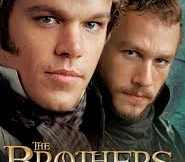
Just mentioning the fairy tale calls to mind everything from the light and fluffy films of Walt Disney to the dark edginess of the 2005 film The Brothers Grimm. From feature films and TV series to graphic novels and literature, the fairy tale is finding prominence in current media trends. But what is trending is not necessarily good writing, and the fairy tale itself is made of more formidable stuff than magic fluff.
Whether re-interpreting a tale or borrowing motifs, fairy tales can offer the writer a rich source of story and creative inspiration. When working with fairy tales, however, it is important to keep in mind that they are, indeed, an original source, and one should approach them with as much insight and respect as any other form of canonized literature.
Sensationalism vs Substance

This recent trend by commercial writers has bastardized the fairy tale into a sensationalistic frenzy of marshmallow fluff: no nutritive substance to be found. The above mentioned 2005 film, The Brothers Grimm, is a fine example of this trend. While the film fulfills the norm of the action-fantasy film genre, it is an abusive misuse of the fairy tale in general. There is no evidence of any real thought or expression of the historical context and deeper meaning in the fairy and folk tale motifs used in the film. The film is not about the “fairy tale” or the Brothers Grimm, it is a film about making sensationalistic motifs, hacked apart from various folk and fairy tales, a quick fix for an audience hooked on junk food films.
The movie is indicative of the screenwriter’s approach to using the fairy tale for superficial entertainment. For example: The Queen in this film is a general “Evil Queen” archetype, but she serves no real or substantive purpose to the film’s story. The Queen’s action-her “want”-as a character is to stay young and beautiful forever. This motive is cliche and superficial, a motif skimmed off the top of the various Evil Queen archetypes found in fairy tales and other films using the fairy tale Evil Queen archetype. In The Brothers Grimm, the Queen serves only as stagnant conflict and vague obstacle. She is not a character: she is an object. This is beautifully illustrated in the climatic scene in which one of the film’s hero characters, Jakob Grimm, smashes a mirror and the Queen shatters into pieces. The destruction of the Queen resolves the bizarre and contrived curse that sort of connects all of the other fantastical eye-candy events of the film. This type of writing rips a few fairy tales apart and then sews back bits and pieces to create a tableau of unrelated tidbits. The result is a badly mismatched quilt with all the seams showing. It is a story that doesn’t really tell a story, and certainly not a fairy tale.
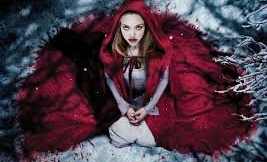
Another example of fairy tale bastardization in film can be found in the 2011 film, Red Riding Hood, written by David Leslie Johnson. Little Red Riding was an oral folk-tale first collected by the french author Charles Perrault in the seventeenth century, and then later by the German folklorists (real) Grimm Brothers in the nineteenth century. Johnson’s screenplay, Red Riding Hood, is a Gothic teen love story depicting overtly-sexualized wolf motifs weakly extrapolated out of the original fairy tale, as well as out of several modern fairy tales-most notably those by British fiction writer Angela Carter. While the film’s storyline has some promise as being a “who dunnit”- in which we do not know if the wolf is beau number 1 or 2, the father, or the grandmother-it strays away from the core of the original story so broadly that the film becomes just what it is: a shallow titillation of sensationalistic fluff.

For an example of a more substantive interpretation of Little Red Riding Hood within popular genre, read Angela Carter’s wolf stories in her collection entitled, The Bloody Chamber, and watch or read the screenplay amalgam of her stories entitled The Company of Wolves (1984). Though full of plenty of old-fashioned skin popping werewolves, Carter’s work engages the audience and reader so that they are drawn into the story, and are left to think.
The films mentioned above, The Brothers Grim and Red Riding Hood, are just two examples, out of many, that exhibit an extrinsic approach to working with fairy tales. This ignorant misuse of the fairytale is not only a bastardization of canonized literature, it is a dangerous misrepresentation of original fairy tales. It is dangerous because it misleads writer, audience, and reader into believing that 1) it is ok to rape and pillage a literary form, and 2) that the results are a “true” expressions or interpretations of the literary form.
But then, perhaps this is not entirely the writer’s fault. Like the infamous incest in Sophocles’ Oedipus, fairy tales do exude a certain kind of superficial sensationalistic residue that sticks to the mind, while the depth and richness of the human condition that is beneath the surface of the story is forgotten or overlooked. That’s what sells, the sticky gooey stuff, and it is what the audience, and the reader, have voluntarily bought into.
Until the writing gets better.
So what is a fairy tale, really?
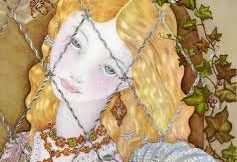
The fairy tale has been a source of fascination and study for folklorists, ethnologists, and psychologists for decades. Most cultures worldwide have a tradition of oral folk tales that dates back for centuries. As a writer, reader or scholar of fairy tales, it is important and useful to distinguish between folk tales and fairy tales. As we will later see, the fairy tale has its roots in the folk tale. Stories such as Hansel and Gretal, Little Red Riding Hood, and the earlier version of Rumplestiltskin are examples of the folk fairy tale. Stories such as Bluebeard, Puss in Boots, and Beauty and the Beast, are examples of what is termed “literary fairy tales”. For the sake of brevity, we will focus on literary fairy tales as opposed to folk fairy tales, as a discussion of the significance of the folk fairy tale is a subject unto itself.
The literary fairy tale was first configured in Europe, specifically France, during the seventeenth and eighteenth centuries as a type of parlor game of the aristocracy. It is important to understand that fairy tales were intended for an educated aristocratic adult, not children.
According to fairy tale scholar Jack Zipes:
“The literary fairy tale was first developed in salons by aristocratic women as a type of parlor game by the middle of the seventeenth century. They set the ground work for the institutionalization of the fairy tale as a ‘proper’ genre intended first for educated adult audiences and only later for children who were to be educated according to the code of civilite` that was being elaborated in the seventeenth and eighteenth centuries.” (Zipes. Fairy Tale as Myth, Myth as Fairy Tale. The University Press of Kentucky. 1994).
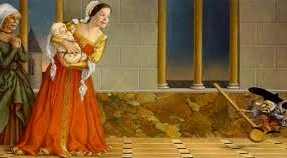
The salon story teller would borrow from a well-known folk tale, change the given circumstances and characters to fit aristocratic social values and create a ‘new’ story. A fine example of this type of metamorphosis can be found in the story of Rumplestiltskin. In earlier folk or peasant versions, the story follows the journey of a young woman who can only spin flax into gold: something that would be considered “useless” in peasant society where a young woman’s future is dependent on her ability to spin flax or wool into yarn. In later salon versions, the young woman marries a King and is commanded to spin straw into gold. The young woman in this version has no skill as a spinner and has also been elevated to marrying into aristocracy. This example shows the influence of the gradual shift in socio-economic conditions of the time period.
As a side note on folk tales, Rumplestiltskin was one of many folk tales about spinning told amongst peasant women. The female protagonists in these spinning stories solved their own problems with the help of other women, and spinning itself was clearly the lucrative province of women. With the gradual shift of woven fabric becoming the industry of men, spinning declined in the homes of peasant women, and we find the later “fairy tale” version of Rumplestiltskin. Rumplestiltskin, not the young woman, becomes the central character to the story; he is the one doing the spinning.
The Literary Fairy Tale as Written Form
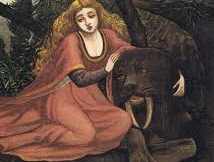
By the late seventeenth century, the popularity and societal acceptance of salon fairy tales as an art form amongst the aristocracy led to the writing down of the stories by both male and female writers. It is interesting to note that one of the reasons for this was in oppositional response to the current trend in literature at the time: that of classic Greek and Latin. And it was women who initially led the way in the institutionalizing and the writing down of the salon fairytale. The tales were specific as a means for them (women) to conceive and elaborate on other alternatives in society other than those prescribed to them by men. The fairy tale was vehicle for aristocratic women to imagine and express how their lives might be improved according tho their own sensibilities.
Zipes quotes German scholar Renate Baader from her analysis of the social and literary differences between the male and female salon writers of the seventeenth and eighteenth centuries:
“While [Charles] Perrault’s bourgeois and male tales with happy ends had pledged themselves to a moral that called for Griseldis [Cinderella] to serve as a model for women, the women writers [at the time] had to make an effort to defend the insights that had been gained in the past decades…how to redeem their own wish reality in the fairy tale. They [women writers] probably remembered how feminine faults had been revalorized by men and how the aristocratic woman had responded to this in their self-portraits. Those aristocratic women had commonly refused to place themselves in the service of social mobility. Instead they put forward their demands for moral, intellectual, and psychological self-determination” (Zipes).
Zipes states that women writers of the time wanted to present the aristocratic woman’s view point with regards to topics such as love, fidelity, tenderness, and arranged marriages. Zipes portrays one such writer, Madame D’ Aulnoy, as creating settings in her stories that put women in greater control of their destinies. Also, D’ Aulnoy’s narrative strategies exposed the decadent practices and behavior amongst her class. Especially any such behavior that degraded an independent women.
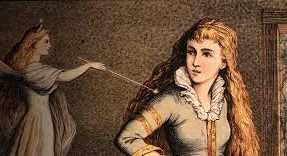
D’ Aulnoy was fascinated with the myth of Cupid and Psyche. In D’ Aulnoy’s fairy tale, The Green Serpent, there is a direct linear connection to Psyche and Cupid and then to D’ Aulnoy’s protege’s ( Madem de Villineuve) famous Beauty and the Beast.
The basic plot of The Green Serpent: a young aristocratic woman with admirable qualities is cursed, finds a suitor who is also cursed. The young woman, first named Laurette then Queen Discrete, gives in to curiosity and she sneaks a look at her new husband, who is a dreadful serpent creature. This transgression brings down the wrath of the bad fairy, Magotine, that cursed them both in the first place. Queen Discrete performs several impossible tasks, and with the help of the good fairy, Protectre, she redeems herself and attains her lover’s freedom. In Psyche and Cupid, Psyche was afraid her unseen lover was a monster. In The Green Serpent, and later in Beauty and the Beast, the female protagonists lover is a monster.
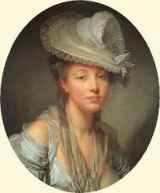
While the tale makes the most conservative of modern feminist minds cringe, The Green Serpent, is clearly an intelligent, if genteel, woman’s story written for other women. Not by men for women. The main characters in the story are female and the plot is driven by women. When looking at this tale and others, it is important to keep in mind the social circumstances under which they were written. In reading these three stories, the modern writer gains the perspective of how myths and fairy tales influence each other and evolve not only as literature, but also as storytelling.
Early writers of the literary fairy tale included: Madame D’ Aulony, Mademoiselle L’Heritier, Madame de Murat, Madame de Villineuve, Madame Le Prince de Beaumont, and Charles Perrault. It wasn’t until well into the nineteenth century that the Brothers Grimm began collecting and compiling collections of folk and fairy tales.
Interpreting Fairy Tales
Probably the most important task of a modern writer who wants to work with fairy tales is to interpret the fairy tales on multiple levels: socio/economic, folk-lorical, historical, and psychological. It is also important to read as many unadulterated versions of the original tale whenever possible. For it is in the original tale that we find the bones of the story.
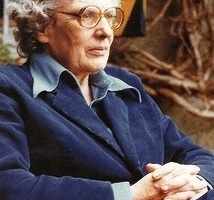
One approach to interpreting fairy tales is through Jungian psychology. Jungian scholar Marie-Louise von Franz puts it this way:
“Fairy tales are the purest and simplest expression of collective unconscious psychic processes…in myths or legends we get at the basic patterns of the human psyche through an overlay of cultural material…the fairy tale is its own best explanation: that is, its meaning is contained in the totality of its motifs connected by the thread of the story” (von Franz. The Interpretation of Fairy Tales. Shambhala Press. 1970).
The basic premise of the Jungian approach to interpretation is that the fairy tale, folk tale or myth contains archetypes that correlate with the fixed archetypes of the human psyche: persona, ego, shadow, anima/animus and self. The fairy tale plays out a psychic drama with the characters and content of the story flowing as motifs through the archetypes within the story and the human psyche to represent the action within the human psyche and the psyche of the story.
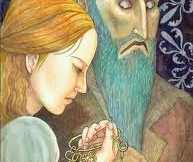
Here is an abbreviated example: In Charles Perrault’s fairy tale, Bluebeard, a young woman agrees to marry a rich and strange man with a beard of indigo blue. She is at first frightened of the man but soon gets used to him. He leaves her in his vast house and in charge of his keys. He tells her she can unlock any and every door in the house except for one. The young woman’s older sisters come to visit and convince the younger woman to disobey. They find and open the forbidden chamber that is in the basement. Inside the chamber are the bloody remains of the corpses of the man’s previous wives. The key begins to bleed so that the young woman cannot hide her transgression. When Bluebeard returns he questions her and discovers the bloody key. He becomes enraged and threatens to kill her. The young girl begs for time to compose herself and Bluebeard acquiesces. The young woman sends for her brothers who arrive in time to kill Bluebeard and save the young girl.
On the surface, this tale appears to be a teaching tale about the perils of marriage and the violence of men. It also defames the sin of female curiosity. But if we look at it from a Jungian perspective, the fairy tale reveals a depth of meaning:
The young girl is the ego of the female psyche. Bluebeard is the inner shadow content. The older sisters are the female psyche’s intuitive function that questions “what is hidden?” The chamber is the deep unconscious mind where truth needs to be discovered The key is the catalyst for uncovering the truth. The horror within the chamber is the horror of the truth that needs to be dealt with. Once the truth is uncovered, it bleeds and cannot be ignored. The brothers are the female psyche’s animus (male content) that is activated as psychic muscle to help the psyche overcome the murderous intent of her psyche’s shadow. The shadow is subdued, and a new order is established in the psyche.
A Writer’s Wrap-Up
Writers are storytellers. We make up lies. We tell the truth through lies so that our stories are true lies. The fairy tale is a lie that expresses the deepest of human truths: those of the psyche through the imagination. The fairy tale expresses these truths of the psyche, through the imagination, in ways that are universal to the human condition. They deserve our appreciation and respect. However, they beg for creative relativity and expression in our modern lives. Like Shakespeare, the fairytale expresses timeless motifs that are craved by readers and audiences. Films like The Brothers Grimm and Red Riding Hood are popular because of this craving of the modern human soul. As writers, we can, and must, do our best to express the truth within the core of the tale.
The key here is to understand that regardless of how one approaches it, the fairy tale is a formidable phenomenon. The more the writer delves into a tale, the more riches will be revealed to the writer and reflect in their writing. While original fairy tales are canonized literature, the more the writer understands the material, the more unconventional, creative leeway they will find.
List of Good Reads and Resources for the Writer
So what constitutes “good” writing in regards to fairy tale, folk or mythic content? Depth. Knowledge. Sincerity. Creativity. And the ability to work a fairy tale, myth or folk tale, from the inside out, rather than the outside out.
Here are some recommended screenplays, stage plays, fiction and scholarly resources. Each reveals a reverence, respect, knowledge and sensitivity on the part of the writer in working with their chosen myth, folk or fairy tale content.
Screenplays
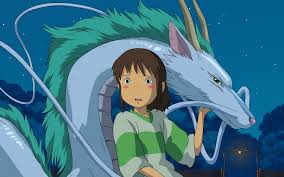
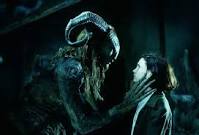
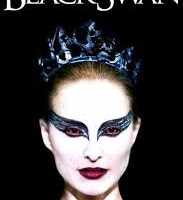
Play Scripts
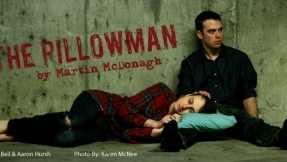
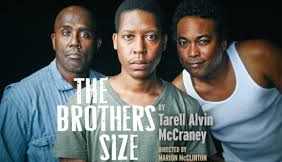
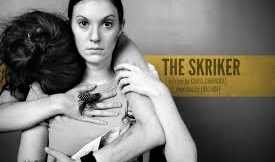
Works of Fiction
The Bloody Chamber by Angela Carter.
Forests of the Night by Tanith Lee.
My Mother She Killed Me My Father He Ate Me, edited by Kate Bernheimer.
The Brothers Grimm, translated by Jack Zipes.
Tales of Enchantment, compiled and translated by Jack Zipes.
Scholarly Works
Fairy Tale as Myth, Myth as Fairy Tale by Jack Zipes.
The Interpretation of Fairy Tales by Marie Louise von Franz.
Woman Who Run with the Wolves by Clarissa Pinkola Estes.
Hero with a Thousand Faces by Joseph Campbell.
What do you think? Leave a comment.
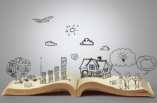
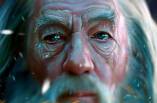
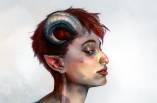
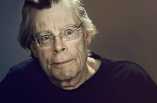
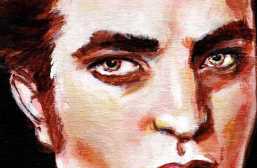
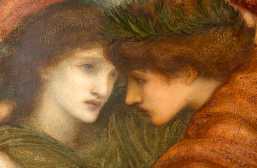
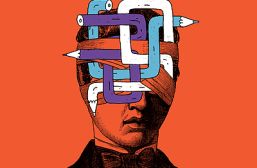
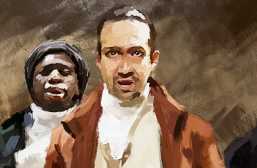
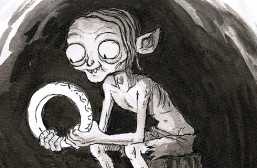
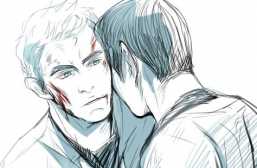
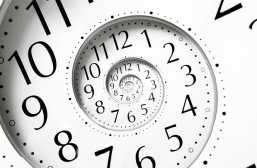
Loved your article! I learned so much. I especially enjoyed your section of the Jungian approach to Bluebeard, giving the story a richer meaning. I look forward to reading more of your work!
Thanks and glad you got some stuff out of it. Yes, Bluebeard lends itself very nicely to Jungian interpretation. If you are interested in that fairy tale, I would suggest reading Angela Carter’s story The Bloody Chamber from her collection called the Bloody Chamber and Joyce Carol Oates short story Bluebearded Lover and John Updike’s short story Bluebeard in Ireland, both of these stories are in the My Mother She Killed Me, My Father He Ate Me collection.
I particularly enjoyed this section as well. I had encountered Jungian theory before but I had never quite considered that its application was so vast. I feel the need to look at everything I’ve ever read in depth and consider how it might be picked apart that way.
I think I might start looking into some of the works listed.
I have been writing poetry, of all types, short stories for all ages so I wanted to try the fairy tale for a change!! I have started a children’s story with different adventures and I have finished three short stories so far and I have my 8 year old granddaughter and my her 4 year old brother give me different ideas for the different adventures and it has been so much fun!
This was a helpful article, thank you very much!
This is a great post to help those looking for how to write a fairy tale, AND it is a great post for people who want to understand fairytales better.
Writing a fairy-tale is like composing any other, story with characters, settings, and a plot; It is the freedom of imagination allowed that is, both a boon and is with pitfalls fraught.
I went through all the elements of a fairy tale with my students in my K-2 Literature class this year. This would have been an interest resource to use for that.
Glad the article provided some interest, learning and possible resource information. I have no experience in writing fairy tales for children as (shown in the article) the fairy tales that we think of as childrens fairy tales (Beauty and the Beast, Snow White, Little Red Riding Hood, etc) were not written or told to children until later and then the original stories were edited and altered. Which is of course all part of the metamorphic creative process. I use the fairy tales for psychological content and character process within fantasy/horror type writing.
While the fairy tale is like any other kind of writing with character, plot, etc,many fairy tales break with the structure and do not make logical sense within the craft of writing. This is because they tend to stream from the unconscious mind in metaphors and images and can at time express a process more than a story. Much of the folk fairy tales found in the Grimm collection are like this, The Armless Maiden, The Robber Bride, etc,
Ms. Wolfe,
Your article rocks. Fairytales are the basis for so much of our modern storytelling. You nailed it right on the head.
You’re article is both informative and entertaining. Especially since Into the Woods is set to come out soon. I’ll look to this as a guide.
Thank you and glad you found it both entertaining and informative. Part of my intention in writing the piece was to integrate the scholarly information with an analysis of popular genre trends to try and show examples that can be related to.
And yes! I am excited to see Into the Woods, I remain hopeful and a sucker for Hollywood to someday “get it right” and find the blend between depth of content and entertainment.Into the Woods is a musical written by Sohndheim (which I need to read) Thanks for the mention.
As a creative writer you lend an informative perspective. I agree with your ideology on the sensationalism and bastardization of the fairy tale. I find it interesting how these tales are retellings that simply reify the most stereotypical of the cultural norms. In my opinion, the original versions of some fairy tales that I’ve recently read were in fact, “non-typical”. This 19th, 20th and most recently 21st century shredding of the tales is what twists and develops the love at first sight, reification of gender roles and nearly always commits matricide when it comes to the maternal figures, but always upholds the patriarchal standard. Since you are an expert on fairy tales, and I am so far from it, I would be interested to hear (or see) your thoughts on the theory the depiction of the “evil” witch is based in perpetuating the fear of older women. I digress, sorry. Good stuff, right here. Thanks for the insight.
Thank you for your comment. You have opened up a can of worms with the subject of the the feminine in fairy tales and the current trend of patriarchal values. I am not an expert in fairy tales, I am a writer who studies and uses them in writing. But my opinion and observation on the (current) Evil Queen archetype is that she is a direct manifestation out of and continuation of the Evil Queen motif that Walt Disney portrayed in his earliest (very patriarchal) films of last century: Snow White, Sleeping Beauty and Cinderella. These are the archetypes that infested the American audiences mind, and as I said, the crap on the surface sticks to the mind. The Evil Queens in the original tales do become progressively more deplorable and objectified (rather than characterized) as Western civilization became more bourgeouis and industrialized by patriarchical values. Now, I notice that the the Evil (older) Queen motifs found in popular genre tend to reflect a societal devaluing, fear, apathy and hatred of the post-menopausal woman. There seems to be a negative attitude toward menopausal and post-menopausal women, especially successful and powerful post-menopausal women. I have heard them labled as “crazy”, “bitches” or worse, “men with tits”. I also think that the current Evil Queen motifs reflects the youth and beauty worshiping culture put forth by commercialism. Again, once a woman is past a certain age, she is not “beautiful” or “useful” and will inevitably turn into an unstable crazy person. An Evil Queen who’s only want and motive revolves around her loss of beauty and love. Yet the question remains: how much of the Evil Queen’s want and motive are hers and how much has been bestowed upon her by male values? As an alternative to this current trend, the only example I know of a more “true” or balanced motif for the menopausal or post-menopausal Queen archetype as being powerful (whether she’s a bitch or not) and expressive of having a prominent and vital place in a world of men (maybe even more so) is in the late Robert Jordan’s Aes Sadai from his Wheel of Time series. Brilliant, that.
This is a wonderful explanation of a couple fairy tales I didn’t know the histories of or how involved women were in the stories. Very engaging and informative!
Someday I will write a fairy tale. At the moment, I’m working on a slightly different story, however.
I used to write a lot when I was younger, but now I have less time. Hopefully I’ll be able to get back into it!
I am an author myself, but have not ventured into fairy tales yet. I have thought about it, have made a few incomplete attempts.
I love fairy tales and have some German books that I just love… I like the old stories with the illustrations.
I enjoyed reading this. I’ve always wanted to write and am a writer of sorts with 3 books on Amazon but I want to venture into something more detailed whether it is a self-help book and/or murder mystery.
I really enjoyed this, it’s nice to see someone actually explain things instead of leaving them up in the air! 🙂
This is an exploration of how to go about writing in this genre.
I am far too jaded to be able to ever write a fairy tale, but this was a great read!
Wonderful article.
Found this as I researched fairy tales and glad I did, thank you!
What a spectacular article! As an elementary school teacher, I have to teach such dumbed-down generalizations of all of genres… Fairy tales are so much more rich and varied and culturally significant. Thank you for such a brilliant read!
The movies that haunt me often follow a fairytale structure, such as Lars and the Real Girl with Ryan Gosling. Although he is emotionally damaged, Lars begins to move out of isolation when he presents his romantic interest — a blow-up doll — to the town community. Out of compassion and a willingness to help its wounded member, the townspeople act as one in agreeing to “believe in” Lars’ fiction. This interaction of the individual with his or her community, and the effect of each on the other, seems to be a common feature of fairy tales.
I am not familiar with Lars and the Real Girl, but it sounds wonderful. And it seems to me that what appeals from these types of stories that follow a fairy tale structure, is the ability for us to empathize with the journey of the protagonist. The fairy tale as a psychological journey produces in us a catharsis so that we experience something that cannot be accessed any other way but through the myth or fairy tale. That’s the writer working with the mythic or fairy tale: a creative expression of archetypes and motifs from the inside out. Thanks for your well-thought comment!
I’m an author and I always wanted to do fairytales, but I get so wrapped up and distracted with my novels, that I lose track of my stories in the first place. One of these days, though!
This is just perfect for what I’m working on with my middle and youngest right now! My youngest and I are currently writing a fairy tale.
Thank you so much for freely sharing this.
I’m not too fond of fairy tales but this was such a well written and edifying article, I read it twice. Thank you!
Loved this article! This was extremely helpful to read as a fiction writer.
Can we also talk about the fact that these fairytales always have a love component?
The love component of the original literary fairy tale is indeed a layer within the complex code of aristocratic civilite. The stories (by female writers of the time) were intended to instruct men as much (if not more so) as women. The quest for love is fulfilled only through many metaphorical and thought provoking trails and tribulations by both the female and male protagonists. Love can only be fulfilled if each has undergone a substantial shift in their psychologies, change for the better and establish a new order of thought and society. The love motif of the literary fairy tale should not be identified or confused with the oversimplified, and in my opinion damaging, dipiction of “love” found in the Disney fairy tale model.
I have illustrated for fairy tales stories but never wrote one, although I do have short poem stories.
Like others here, I really enjoyed and learned from your Jungian reading. I hope we can look forward to more articles from you in the future!
Thanks for reading and I am very glad you enjoyed the article. I am working on future articles, one on understanding the Hero’s journey and another on working with archetypes and motifs.
I sincerely wish I’d read this before writing about fairy tales for my dramaturgy course last year. Wow!
I’m always learning after the fact, too. I wrote a full-length play as my graduate thesis using the myth of Persephone thinking that a story is a story, right? Well, I found out, after the fact that I committed to the thesis, that dramatic writing is very different than fiction and the hardest form of writing on the planet. Especially for a non-theatre person. I crammed a year or two of dramaturgy and the craft of playwriting down my throat and managed to write the play and graduate.
Interesting stuff!
Intriguing information. Personally, I find Jungian criticism to be a bit forced, but I appreciate its consideration.
It is EXTREMELY important to consider the historical and cultural context when discussing any form of literature, fairy tales included. I very much admired the thoroughness given to the French history in your article.
Good info on Writing a Fairy Tale.
I kind of want to try and write a fairy tale now…
Absolutely fantastic article! I love fairy tales and think that they can fulfill intellectual and psychological needs in the reader. It is fascinating to think about all the works of art (art, plays, books, tv shows, and films) that draw upon myths and fairy tales as inspiration.
Fanyastic article but I do have one question hasn’t the wolf in red riding hood always been about the dangers of sec and rape?
I enjoyed the history of women and fairy tales-it’s always important to look at women’s oft-overlooked role in creative history! However, I don’t entirely agree with you that modern movies are over-sensationalizing fairy tales or cheapening motifs. Many of the original stories, including many of the Grimm Brothers’ and Little Red Riding Hood, are short, superficial and HIGHLY sensational. Red Riding Hood has long been a story about sexual awakening and womanhood, and there are several Grimm Brothers stories are shockingly violent: Cinderella’s stepsisters cut off parts of their feet and have their eyes plucked out!
“A tableau of unrelated tidbits” might be my new favorite phrase. I personally find the cinematic bastardization of fairy tales revolting, but I wonder if that bastardization is even relevant to the conversation. Any Hollywood director can wave the flag of “based on” and say theirs is a new art form paying homage to a classic. What is the argument for a true adaptation when titillation = success?
What an amazing article! It was so deep and informative; you made me think about fairy tales in a way I haven’t thought of before. High fantasy and fairy tales are hard to write without being cliché. It’s a struggle for the modern-day writer to write something with fairy tale themes in it without reflecting something which has already been created before. However, when done right, it can be fascinating. Your exploration into the psychological aspect of fairy tales was even more intriguing; to think of them in such an abstract way was very creative. All of the points you made were useful for someone looking to experiment with writing their own fairy tales. I would definitely recommend this article to anyone. Thank you!
This was an enjoyable read. My question is, if many fairytales and folk fairytales were written and told by aristocratic females, where does the translation to children’s stories come in? Why are they considered children’s tales now? Who began to change them into, as many people think they are now, lessons for children? Additionally, I am very curious as to how one might analyse the story of Little Red Riding Hood in a Jungian perspective? As I have been told, the story relates the message of Little Red Riding Hood the character being a young woman who is coming of age and will soon start coming to sexual maturity, i.e. puberty. She is now faced with the idea that “the wolf” may come to “consume” her. The Wolf is supposed to represent men becoming more attracted to her and seeing her as now a potential mate. If this interpretation can be considered valid, is it not then o.k. to update the story to a more modern audience? The themes can me seen in both. Perhaps things may be over sexualized, but the story, told as is was originally was probably considered a bit scandalous for the time.
Thank you for your well-thought comment!
As far as I understand, once the oral tradition of the fairy tale (folk and literary) became a written form ( about the beginning of the 1700’s) they were used by the aristocracy and bougoise as part of the code of civilite in instructing children. Later, in the mid to late 1800’s, after folkorists like the Grimms, compiled and published stories, books were common place and basically took the place of the need or relevance of the oral tradition. The stories also now contained material that perpetuated patriarchal ideas and were written expressly for children. The biggest transition from adult to the watered down versions we see today came over the turn of the 19th century. Printing was common place and books now had illustrations. It was at this time that illustration in story became the focus and soon came early animation films, and then, of course, came Walt Disney. Disney was obsessed with the fairy tale and changed the entire way they are told. He also re-interpreted them to fit his on American patriarchal ideals. And here we are today!
Little Red Riding Hood: On the surface a teaching tale about the dangers (and sin) of female menstruation and sexuality. But also, the story contains some basic psychic archetypes and archetypal/psychological process: Red as the Ego, encountering the wolf, the internal Predator/Shadow-Animus/Shadow, the Grandmother as the out-moded Ego function devoured by the Shadow and in need of sustenance from the new Ego (Red brings food to her sick granny). The huntsman as the positive Animus energy that helps Red defeat the Shadow/wolf/Shadow Animus Complex. Red’s process of initiation can be seen as the young woman gaining the treasure of her inner “male” side as an ally in order to heal, claim or find some aspect of herself (wisdom). The story was an oral one, so it is difficult to know how women would tell this tale to each other. What we know and are familiar with are the Grimm’s written version(s) which have the Grimm’s added or embellished with teir own material and patriarchal values.
Part of the reason we connect with and revere fairy tales is the belief that they reflect something about what Jung would call the “collective subconscious.” Though we cannot perfectly understand it, we may give stories credit for tapping into it because of the connection we feel toward them, as well as their longevity. You mention, however, a difference between the meat of the story and the parts that “stick.” If there is fluff that sticks to our minds, how can we clearly distinguish between it and the more meaningful matter at the story’s deeper heart?
As a huge lover of fairytales, thank you for the excellent article. Re: The Little Red Riding Hood movie — Odd how a story about a girl unwittingly eating her grandmother’s flesh in a traumatic shift to maturation turns into a cleansed love story, huh? I really enjoyed Angela Carter’s different interpretations of LRRH in The Bloody Chamber. Speaking of that, how cool is it that the eponymous short story in that collection has the mom coming to save her daughter by shooting the bad guy (if I recall correctly)? I use fairytales as inspiration for some of my stories when considering potential conflicts.
There is so, so much to learn from this article! And I’m really glad you wrote about the sensationalized fairy tales in some films. What are your thoughts on a show like Once Upon A Time?
Cool! I like the history part too.
I love the way you wrote about the history and psychology behind our love of fairy tales and how they’ve changed over the years!
Great article! It’s interesting to see how fairy and folk tales change based on the shifting of sociocultural norms, isn’t it? I wrote my MA thesis on retellings of fairy tales so I was excited to see you quote from Zipes.
This is a lovely and helpful article. thanks for sharing..
Extra ordinary write-up. Thanks for the tips indeed.
“Writers are storytellers. We make up lies. We tell the truth through lies so that our stories are true lies. The fairy tale is a lie that expresses the deepest of human truths.” I love this passage. It goes to show that fairy tales aren’t simply for entertainment, which is one thing that Hollywood tries to do when bastardizing old fairy tales in films for money. This article is making me consider in my own writing whether I speak of any human truths while I make up my fantastic fairy tale lie.
This is truly fascinating in regards to the increasingly popular trend of altering and creating new versions of these well known fairytales. I have always been interested by the ways authors, directors and the likes create unique retellings of the stories, and this article is a useful and well informed source.
Great article, and thanks for the list of books and films to try. I don’t know why–maybe because they’re so time-honored, maybe because they are the roots of so many other genres–but I think we have a responsibility to retell fairytales respectfully and responsibly. As you wrote, “junk food films” where characters have clichéd motivations, if any, don’t do it. The real “grown-up fairytale,” so to speak, is one that captures adults the way the originals enchant children. As for modernized children’s and YA versions, well, we have an even bigger responsibility there. Young audiences who find modernized fairytales boring will remain turned off to the genre. But a well-written adaptation can work wonders for both bookworms and reluctant readers.
Great article, thanks for sharing
I had never thought of fairy tales being sensationalized before, so thank you for bringing this to light! I personally tend to separate “fairy tales” like Disney movies and other such things from their original, darker versions like what the Brothers Grimm actually compiled and wrote. The new versions have been changed so much that I almost count them as completely different stories with very little in common with the original other than the inspiring topic.